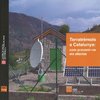When an earthquake occurs, the behaviour of the soil can be very different depending on the geomechanical characteristics of the materials that form it. In those cases where the soil is composed of soft and/or poorly consolidated materials, amplifications of the seismic waves can occur, causing damage to buildings even in areas far from the epicentre. Increases in the amplitude and duration of soil movement have also been observed when seismic waves are propagated by certain geometries of the subsoil or in topographic reliefs. In the majority of destructive earthquakes of the last years (Michoacán 1985 -Mexico-, Loma Prieta 1989 -California, United States-, Kobe 1995 -Japan-, Izmit 1999 -Turkey-, Aquila 2009 -Italy-, El Maule 2010 -Chile - and Tohoku 2011 -Japan-) has been able to verify the importance of the amplification of seismic movement because of the effects of soil on the distribution of damage. This phenomenon of amplification must be taken into account in territorial planning, in the anti-seismic design of structures (seismoresistant construction standards) and also in the evaluation of the seismic safety of buildings already built.
The map of seismic mesozonation of Catalonia at a scale of 1: 250,000 presents the seismic amplification depending on the terrain for the whole territory.
The legend of the map is based on a classification of the terrain (from A to E) inspired by the European regulation of earthquake-resistant construction, called Eurocode 8 (CEN, 2004). The classification of soils in the seismic mesozonation of Catalonia takes into account the resistance of the surface terrain, its thickness and the contrast with the resistance of the underlying terrain, factors that allow estimating the effects of amplification of seismic waves. On the reverse side of the map, the process of realization is described, with indications of the mechanical characteristics of each type of terrain and the different thicknesses considered. The characterization of the seismic amplification of each soil class is also shown, both in terms of macrosysmic intensity degrees and acceleration response spectra used in the calculation of structures.









